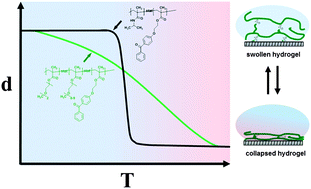Photoreactive oligoethylene glycol polymers – versatile compounds for surface modification by thin hydrogel films†
Abstract
Solid surfaces are modified using photo-crosslinkable

* Corresponding authors
a
Universität Potsdam, Department of Chemistry, Applied Polymer Chemistry, Karl-Liebknecht-Str. 24-25, 14476 Potsdam-Golm, Germany
E-mail:
laschews@uni-potsdam.de
b
Fraunhofer Institute for Applied Polymer Research, Geiselbergstrasse 69, 14476 Potsdam-Golm, Germany
E-mail:
erik.wischerhoff@iap.fraunhofer.de
Solid surfaces are modified using photo-crosslinkable

 Please wait while we load your content...
Something went wrong. Try again?
Please wait while we load your content...
Something went wrong. Try again?
J. Buller, A. Laschewsky and E. Wischerhoff, Soft Matter, 2013, 9, 929 DOI: 10.1039/C2SM26879E
To request permission to reproduce material from this article, please go to the Copyright Clearance Center request page.
If you are an author contributing to an RSC publication, you do not need to request permission provided correct acknowledgement is given.
If you are the author of this article, you do not need to request permission to reproduce figures and diagrams provided correct acknowledgement is given. If you want to reproduce the whole article in a third-party publication (excluding your thesis/dissertation for which permission is not required) please go to the Copyright Clearance Center request page.
Read more about how to correctly acknowledge RSC content.
 Fetching data from CrossRef.
Fetching data from CrossRef.
This may take some time to load.
Loading related content
